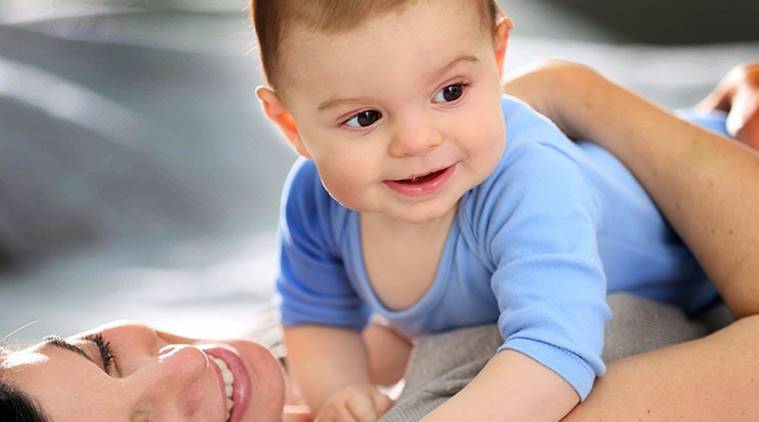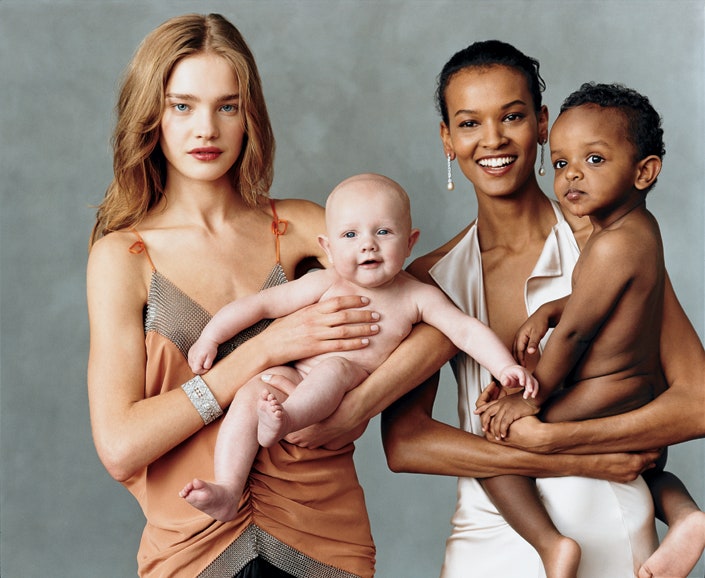To protect baby skin from the sun, use a broad-spectrum sunscreen and dress them in protective clothing. Keep them in the shade whenever possible.
Sun protection is crucial for babies as their skin is delicate and more susceptible to damage. Harmful UV rays can cause sunburn and increase the risk of skin cancer later in life. Babies under six months should avoid direct sunlight entirely.
For older infants, choose a sunscreen specifically formulated for sensitive skin. Dress your baby in lightweight, long-sleeved clothing and a wide-brimmed hat. Always seek shade during peak sun hours. Ensure you reapply sunscreen every two hours and after swimming. Following these steps will help keep your baby’s skin safe and healthy.

Credit: www.whattoexpect.com
Importance Of Sun Protection
Protecting your baby’s skin from the sun is crucial. Baby skin is sensitive and delicate. It can burn quickly without proper protection.
Sun protection helps prevent sunburn and long-term skin damage. Babies need extra care under the sun’s rays.
Harmful Uv Effects
UV rays from the sun are harmful. They can cause sunburn in babies. Sunburn can be painful and harmful to their health.
UV rays can damage the skin cells. This damage can lead to serious skin problems. Babies are more at risk because their skin is thinner.
| UV Effect | Impact on Baby Skin |
|---|---|
| Sunburn | Red, painful skin, risk of infection |
| Cell Damage | Increased risk of skin cancer |
| Dehydration | Dry, irritated skin |
Long-term Skin Health
Protecting baby skin now ensures healthy skin in the future. Early skin damage can have long-lasting effects.
Consistent sun protection reduces the risk of skin cancer. It also prevents premature aging and other skin conditions.
Follow these tips for effective sun protection:
- Use baby-safe sunscreen with high SPF.
- Dress your baby in protective clothing.
- Keep your baby in the shade during peak sun hours.
- Use hats and sunglasses for extra protection.
Choosing The Right Sunscreen
Protecting your baby’s delicate skin from the sun is essential. Choosing the right sunscreen can make a big difference. It ensures your little one stays safe during sunny days. Let’s explore the key aspects to consider.
Spf Guidelines
SPF stands for Sun Protection Factor. It measures the sunscreen’s ability to protect against UVB rays. For babies, an SPF of 30 to 50 is recommended.
| SPF Level | Protection Level |
|---|---|
| SPF 30 | Blocks 97% of UVB rays |
| SPF 50 | Blocks 98% of UVB rays |
Using a higher SPF does not mean twice the protection. Always apply sunscreen generously and reapply every two hours.
Safe Ingredients
Babies have sensitive skin. Choosing sunscreens with safe ingredients is crucial. Look for mineral-based sunscreens with zinc oxide or titanium dioxide.
- These ingredients sit on the skin’s surface and reflect UV rays.
- They are less likely to cause skin irritation.
Avoid sunscreens with oxybenzone, octinoxate, or retinyl palmitate. These chemicals can be harmful to your baby’s skin.
Check for a broad-spectrum label. It means the sunscreen protects against both UVA and UVB rays. This is vital for complete sun protection.
Applying Sunscreen Properly
Protecting your baby’s delicate skin from the sun is crucial. Applying sunscreen properly ensures your baby remains safe. Here, we explore effective ways to apply sunscreen.
Application Techniques
Use a broad-spectrum sunscreen with SPF 30 or higher. Ensure it is baby-friendly and suitable for sensitive skin.
- Test First: Apply a small amount on the baby’s wrist. Wait 24 hours to check for any reactions.
- Apply Generously: Use enough sunscreen to cover all exposed skin. A teaspoon for each limb and the face is a good measure.
- Even Coverage: Apply sunscreen evenly. Pay attention to ears, neck, and feet.
- Pat, Don’t Rub: Gently pat the sunscreen onto the skin. Do not rub it in aggressively.
Reapplication Tips
Reapplying sunscreen is just as important as the initial application. Follow these tips to ensure ongoing protection:
- Reapply Every Two Hours: Sunscreen wears off over time. Apply every two hours for constant protection.
- After Water Exposure: Reapply sunscreen after swimming or sweating. Water can wash away sunscreen.
- Use a Watch or Timer: Set reminders to reapply sunscreen. This helps you stay consistent.
- Carry Extra Sunscreen: Keep a spare bottle in your bag. This ensures you never run out.
Consistent and careful application of sunscreen will help keep your baby safe from the sun.

Credit: thecaliforniabeachco.com
Protective Clothing
Protecting your baby’s delicate skin from the sun is crucial. Protective clothing is one of the best ways to shield your baby. It provides a physical barrier against harmful UV rays. Let’s explore the best choices for your little one.
Best Fabrics
Choosing the right fabric is key to effective sun protection. Opt for tightly woven fabrics. They block more UV rays compared to loosely woven ones.
- Cotton: Soft and breathable, perfect for sensitive skin.
- Linen: Lightweight and provides good UV protection.
- Polyester blends: Often treated to enhance UV protection.
Avoid thin fabrics like gauze. They allow more UV rays through. Always check for a UPF (Ultraviolet Protection Factor) rating. Higher UPF numbers mean better protection.
Hats And Sunglasses
Hats and sunglasses are essential for complete protection. They shield areas that clothing can’t cover.
| Item | Features |
|---|---|
| Hats |
|
| Sunglasses |
|
Ensure the hat fits snugly. It shouldn’t obstruct your baby’s vision. Choose sunglasses with a soft, comfortable frame. This ensures your baby will keep them on.
Shade Solutions
Protecting your baby’s skin from the sun is crucial. Their skin is sensitive and can burn easily. One of the best ways to ensure they stay safe is by using shade solutions. These solutions create a barrier between your baby and harmful UV rays. Let’s explore some effective shade solutions.
Strollers And Umbrellas
Using a stroller with a built-in canopy is a good option. The canopy provides shade and protects from direct sunlight. Ensure the canopy is adjustable. This allows you to block the sun as it moves.
Umbrellas designed for strollers are also very useful. They are easy to attach and adjust. This flexibility ensures your baby stays shaded at all times. Always choose umbrellas with UPF protection for added safety.
| Shade Solution | Benefits |
|---|---|
| Stroller with Canopy | Provides continuous shade |
| Stroller Umbrella | Adjustable and portable |
Shady Play Areas
Create shady play areas for your baby. Use items like pop-up tents or beach umbrellas. These provide a large shaded space for them to play safely. Make sure the fabric offers UV protection. This ensures your baby is safe from harmful rays.
Planting trees or installing awnings in your yard can create natural shade. These options are great for long-term use. They offer a cool and comfortable space for your baby to enjoy.
- Pop-up tents are portable and easy to set up.
- Beach umbrellas cover a large area and are adjustable.
- Trees and awnings provide long-lasting shade.
Combining these solutions gives your baby the best protection. Keep their skin safe and enjoy sunny days worry-free.
Hydration Importance
Keeping your baby well-hydrated is crucial during sun exposure. Babies have sensitive skin and can dehydrate quickly. Hydration helps maintain skin moisture and overall health. Protecting baby skin from the sun involves more than just applying sunscreen. Proper hydration is key to avoid dry and irritated skin.
Signs Of Dehydration
- Dry mouth and lips
- Fewer wet diapers
- No tears when crying
- Sunken eyes
- Sleepiness or irritability
Hydration Tips
- Breastfeed or offer formula frequently.
- Provide small sips of water if the baby is older than 6 months.
- Use a humidifier in the baby’s room.
- Dress the baby in light, breathable clothing.
- Avoid direct sunlight during peak hours.
| Age | Fluid Needs |
|---|---|
| 0-6 months | Breast milk or formula only |
| 6-12 months | Breast milk, formula, and small amounts of water |
| 1 year+ | Breast milk, formula, water, and other fluids |
Sun Safety During Different Seasons
Protecting your baby’s skin from the sun is crucial all year round. Each season brings its own challenges. Here’s how to keep your baby safe during different times of the year.
Summer Precautions
Summer sun can be very harsh. Babies need extra protection during this time.
- Use a high SPF sunscreen: Choose SPF 30 or higher. Apply sunscreen 30 minutes before going outside.
- Wear protective clothing: Dress your baby in light, long-sleeved shirts and pants. A wide-brimmed hat can protect their face and neck.
- Stay in the shade: Keep your baby under umbrellas or trees. Avoid direct sunlight from 10 AM to 4 PM.
- Hydration: Ensure your baby drinks enough fluids to stay hydrated.
Winter Considerations
Winter sun can still harm your baby’s skin. Reflective snow can increase UV exposure.
| Tip | Details |
|---|---|
| Apply sunscreen | Even on cloudy days, use sunscreen on exposed skin. |
| Dress in layers | Use warm, layered clothing. Cover as much skin as possible. |
| Use a hat | A hat helps protect against UV rays and keeps your baby warm. |
Remember, UV rays can reflect off snow. Always protect your baby’s skin, even during winter.
Emergency Steps For Sunburn
Sunburn can be very painful for babies. It requires immediate attention. Quick action can prevent further damage and soothe your baby’s skin. Here are some emergency steps for sunburn.
First Aid Measures
When you notice sunburn, remove your baby from the sun. Place them in a cool, shaded area. Use a cold compress to cool the affected skin. You can use a clean cloth soaked in cold water. Apply this gently to the sunburned areas. Avoid ice as it can hurt sensitive baby skin.
Hydrate your baby with extra fluids. Sunburn can lead to dehydration. Offer water or breast milk more frequently. Apply a gentle moisturizer to the sunburn. Choose one without perfumes or dyes. Aloe vera gel can be soothing. Make sure it is pure and free from additives.
When To Seek Help
If your baby is under one year old, seek medical help immediately. Sunburn can be severe in infants. Look out for blisters on the skin. This indicates a second-degree burn. If your baby has a fever, is very fussy, or seems lethargic, consult a doctor.
Watch for signs of infection like increased redness, swelling, or pus. If these symptoms appear, contact a healthcare provider. Remember, sunburn can be serious. Never hesitate to seek professional advice.

Credit: indianexpress.com
Frequently Asked Questions
How Can I Protect My Baby From Sun Tan?
Use sunscreen with SPF 30 or higher. Dress your baby in protective clothing. Use a wide-brimmed hat. Keep your baby in the shade. Avoid sun exposure during peak hours.
Why Can’t Babies Under 6 Months Wear Sunscreen?
Babies under 6 months have sensitive skin that absorbs chemicals more easily. Sunscreen can cause irritation and allergic reactions. Instead, keep them shaded and covered.
How Do I Protect My Baby Under 6 Months From The Sun?
Keep your baby in the shade. Dress them in lightweight, long-sleeved clothing and a wide-brimmed hat. Use a stroller with a sunshade. Avoid direct sun exposure between 10 a. m. and 4 p. m. Consult your pediatrician about using sunscreen.
When Can Babies Skin Be Exposed To Sun?
Babies’ skin can be exposed to the sun after 6 months. Always use sunscreen and protective clothing. Avoid peak sun hours.
What Sunscreen Is Safe For Babies?
Use a broad-spectrum, SPF 30+ sunscreen specifically designed for babies.
Conclusion
Ensuring your baby’s skin is protected from the sun is crucial. Use sunscreen, hats, and protective clothing. Keep them in the shade whenever possible. Regularly check their skin for any signs of sunburn. By following these tips, you can keep your baby safe and comfortable in the sun.

